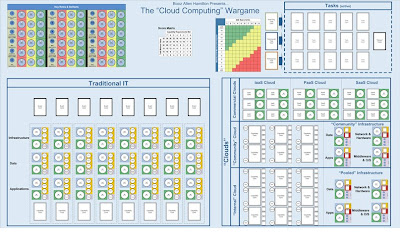Twitter Feed
Federal Cloud Computing Strategy Officially Launched
Federal CIO Vivek Kundra officially launched the Federal Cloud Computing Strategy today. While this is clearly not new news, the document does state the government’s position in a very succint manner.…
GEOINT’s Future is in the Cloud
Recently, Geospatial Intelligence Forum Magazine asked me for my thoughts on the role of cloud computing in the future of geospatial intelligence.My response was recently published in their December 2010…
eTechSuccess: Patterns of Success – Kevin Jackson
My sincere appreciation to John Baker for the eTechSuccess: Patterns of Success interview. John and I worked together IBM as part of the Wireless Emerging Business Organization. His team and…
USBE&IT Winter Issue Focuses on Cyber Security
Thank You USBE&IT Publisher Mr Tyrone Taborn for such an inspiring issue and my sincere appreciation to Mr. Frank McCoy for my inclusion in his list of Cyber visionaries! The Homeland…
Global GovCloud with Cisco and VCE
Last week I had the awesome experience of participating in a global telepresence conference on government cloud computing. Joining me as presenters were Blake Salle, Senior Vice President of VCE,…
NIST Cloud Computing Collaboration Twiki Launches
Today I received my credentials for the NIST Cloud Computing Collaboration Site. “The National Institute of Standards and Technology (NIST) has been designated by Federal Chief Information Officer Vivek Kundra…
GovCloud Predicitons for 2011
Happy New Year All!! 2011 will be the breakout year for GovCloud! Pressure to reduce budget, pressure to manage I resources better and the political pressure of the next presidential…
Vivek Kundra Unveils 25-Point IT Management Reform Program
Yesterday the US Federal CIO, Vivek Kundra, unveiled an ambitious 25-point implementation plan for delivering more value to the American taxpayer. This plan focuses on execution and is designedto establish…
GSA and Unisys/Google Marks GovCloud Watershed
As widely reported this week, the United States General Services Administration (GSA) has awarded a contract to Unisys to create a secure cloud-based email and collaboration platform. The solution will…
NIST Moves Forward on Cloud Computing
Last week the National Institute of Standards and Technology (NIST) held their second Cloud Computing Forum and Workshop. Skillfully shepherded by Ms. Dawn Leaf, the agency’s senior executive of cloud computing,…
“A wargame is a game that represents a military operation.”
“Military simulations, also known informally as war games, are simulations in which theories of warfare can be tested and refined without the need for actual hostilities”
 By actively applying modeling and simulation to IT decision making The Cloud Computing Wargame helps players and organizations understand:
By actively applying modeling and simulation to IT decision making The Cloud Computing Wargame helps players and organizations understand:
- The inter-relationships between cloud computing technology and mission requirements
- How long-term cloud computing strategy can develop, evolve, and change.
- The interaction between different activities that occur within an IT organization in order to implement and support IT capabilities in different capabilities matrices.
- How different strategies maximize mission impact and value
- How different roles work with business and IT partners throughout the organization and value chain.
You comments and suggestions are welcome. I look forward to seeing you at FOSE for this exciting unveiling.
Cloud Computing
- CPUcoin Expands CPU/GPU Power Sharing with Cudo Ventures Enterprise Network Partnership
- CPUcoin Expands CPU/GPU Power Sharing with Cudo Ventures Enterprise Network Partnership
- Route1 Announces Q2 2019 Financial Results
- CPUcoin Expands CPU/GPU Power Sharing with Cudo Ventures Enterprise Network Partnership
- ChannelAdvisor to Present at the D.A. Davidson 18th Annual Technology Conference
Cybersecurity
- Route1 Announces Q2 2019 Financial Results
- FIRST US BANCSHARES, INC. DECLARES CASH DIVIDEND
- Business Continuity Management Planning Solution Market is Expected to Grow ~ US$ 1.6 Bn by the end of 2029 - PMR
- Atos delivers Quantum-Learning-as-a-Service to Xofia to enable artificial intelligence solutions
- New Ares IoT Botnet discovered on Android OS based Set-Top Boxes
